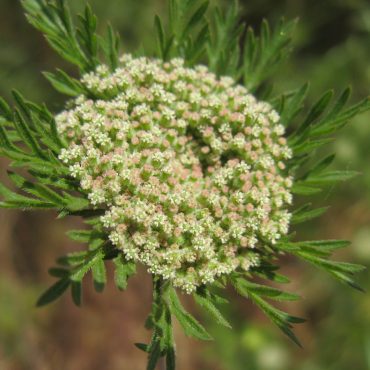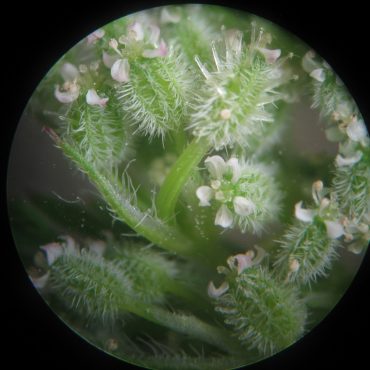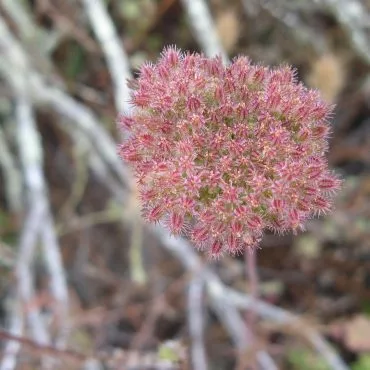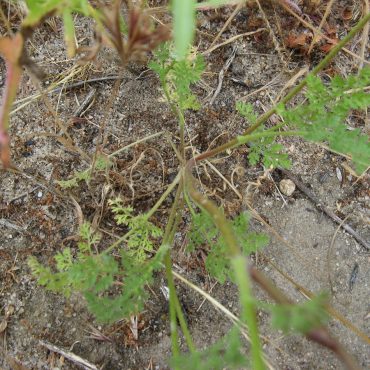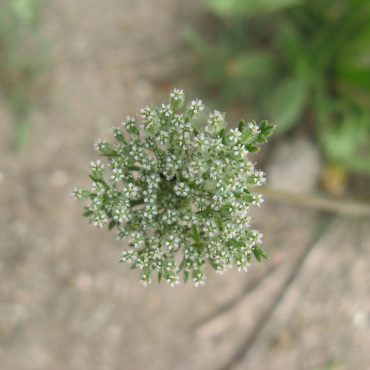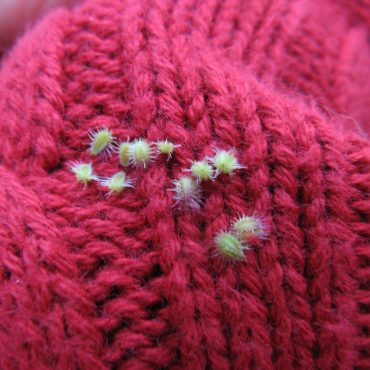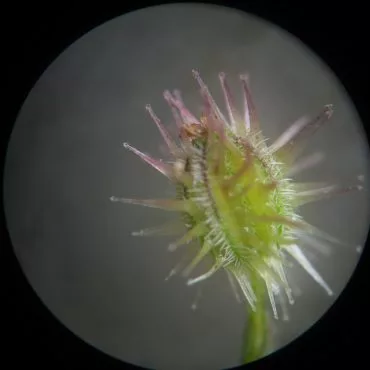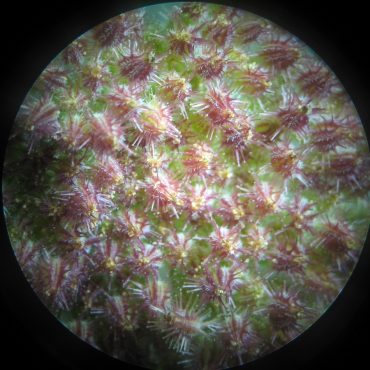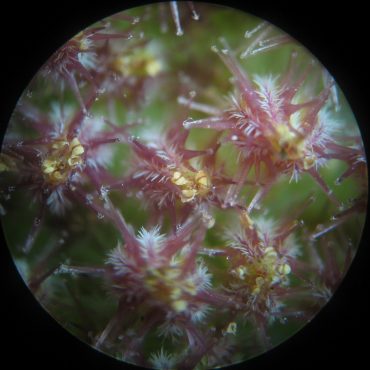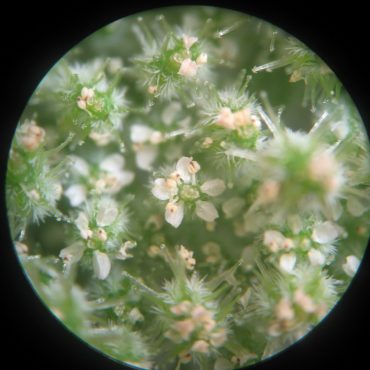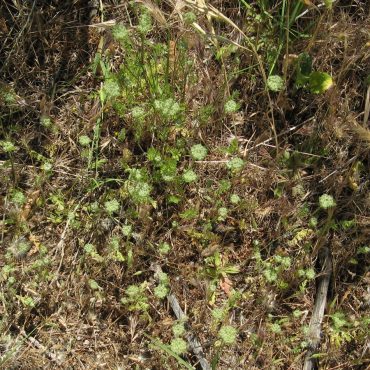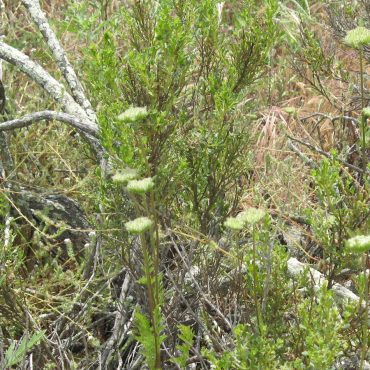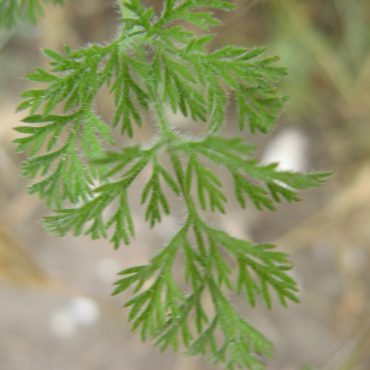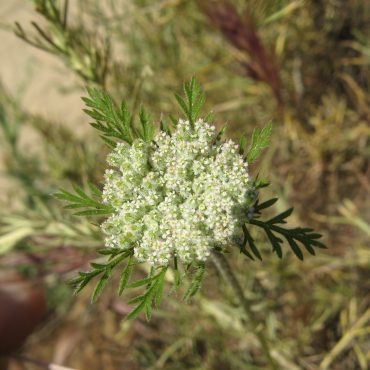In spite of its threatening name, rattlesnake weed is a delicate-looking annual plant. A short-lived clump of basal leaves arises from a small taproot and produces a single, often unbranched stem that grows to two feet (55 cm) or less. Stems are covered with short, stiff hairs. The foliage resembles that of the related garden carrot. Basal and cauline leaves are up to four inches (10.5 cm) long and are two to three times pinnately divided. Petioles are approximately the same length as the leaves, and their bases form U-shaped sheaths around the stem.
Flowers occur in compound umbels two inches (5 cm) or less in diameter, carried singly on top of a stem. Umbels are circular and flat or slightly depressed in the center. Each compound umbel is surrounded by a lacy collar of green, leaf-like bracts. Altogether, the neat cluster resembles a Victorian broach. (It has also been likened to a bird’s nest.4,67) Individual flowers are of the order of 1/32 inch (0.1 cm) across, too small for casual measurement. Most are bisexual, but a few staminate flowers may ocur in the center of an umbel. Sepals are absent. There are five white heart-shaped petals that are somewhat folded up along the midrib; There are five stamens and a single pistil with an inferior ovary that is barrel-shaped with radiating white bristles; there are two elongate styles with minute, capitate stigmas. Major bloom time is April to June.1
On maturity, the dry fruits split into two one-seeded halves, each half an ellipsoid with one flattened side, and less than 1/8 inch (0.25 cm) long. These often develop a pink tinge. They retain the pale bristles of the ovary and have new larger pink prickles that are barbed on the ends. Both types of bristles are superb snatching, grabbing devices for hitching a ride on fur, feathers or socks.


